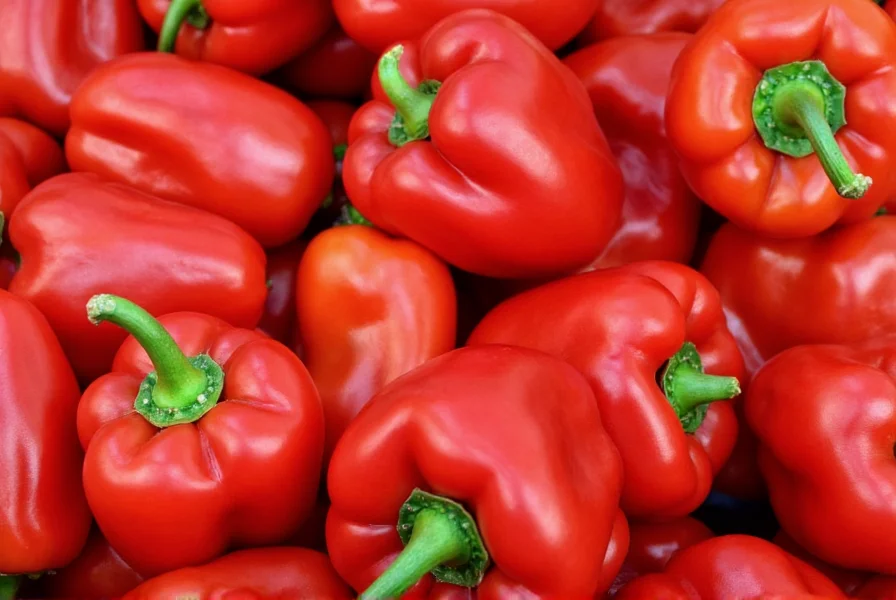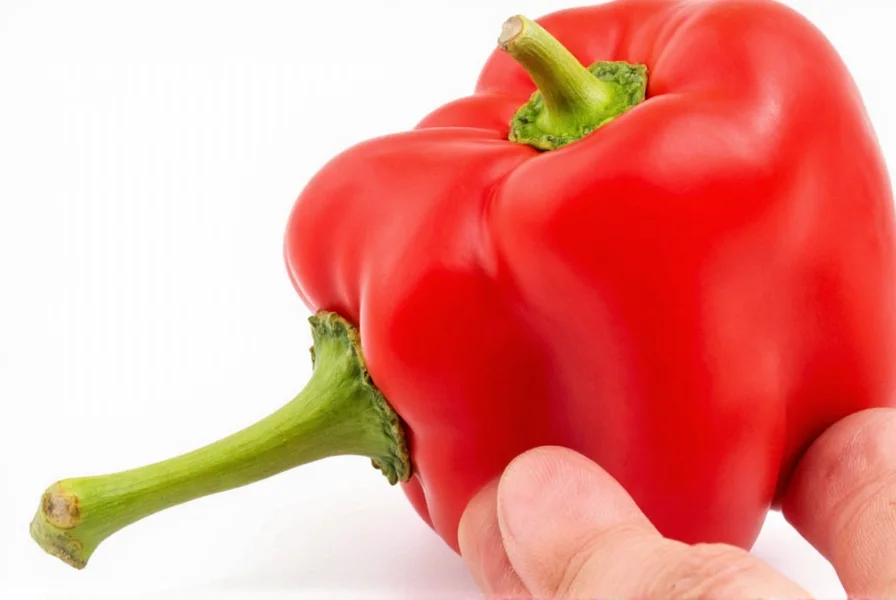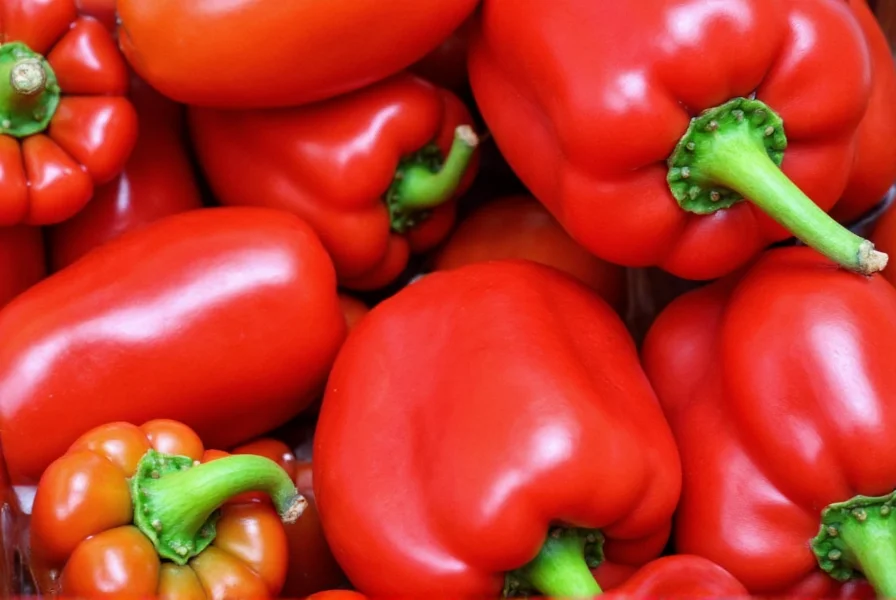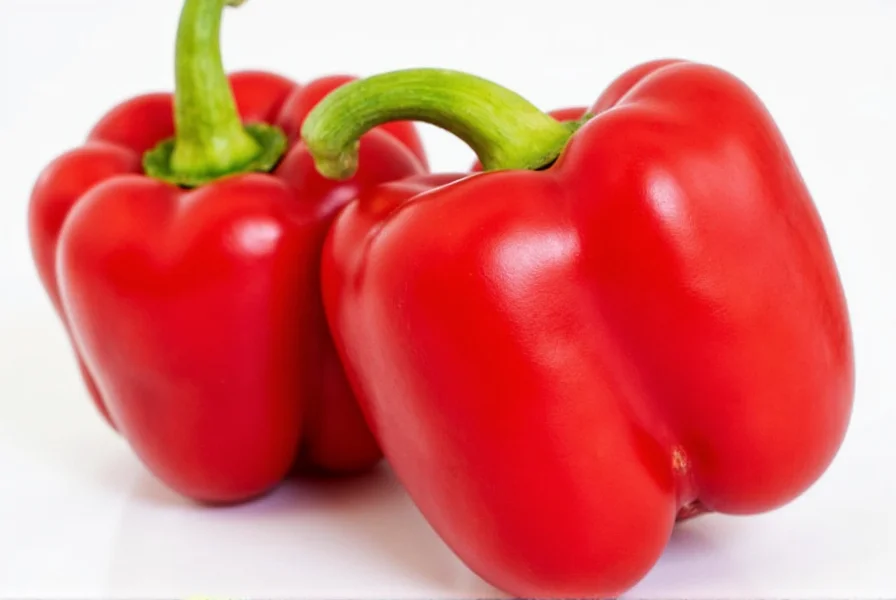Introduction: The Colorful Powerhouse of Nutrition
If you've ever walked through a farmer's market or flipped through a cooking magazine, chances are you've seen that bright splash of crimson — the red bell pepper. It's not just eye-catching; it's packed with flavor, nutrition, and versatility.
In this guide, we'll explore everything you need to know about the red bell pepper. Whether you're a seasoned chef or a curious home cook, you're in for a treat. Let's dive into the science-backed benefits and practical uses of this vibrant vegetable (technically a fruit!).
What Exactly Is a Red Bell Pepper?

A red bell pepper is a fully ripened green bell pepper. While green peppers are harvested early, red ones stay on the vine longer, developing sweeter flavor and higher nutrient density. Botanically classified as a fruit (since they develop from the flower and contain seeds), red bell peppers are commonly used as vegetables in culinary applications.
Known for their thick, crunchy walls and sweet, fruity taste, red bell peppers add vibrant color and flavor to any dish. They can be eaten raw, roasted, grilled, or sautéed — making them one of the most versatile ingredients in your kitchen.
The Science-Backed Health Benefits of Red Bell Peppers
The deep red color of bell peppers isn't just for show. It comes from powerful antioxidants like lycopene and beta-carotene, which are scientifically linked to heart health and cancer prevention. According to the USDA FoodData Central, red bell peppers are nutritional powerhouses:
- Vitamin C Powerhouse: One medium red bell pepper (119g) contains 152mg of vitamin C — over three times the amount in a medium orange (53mg) [USDA, 2023].
- Antioxidant-Rich: High levels of lycopene and beta-carotene combat oxidative stress and support immune function.
- Eye Health Support: Contains lutein and zeaxanthin, which protect against age-related macular degeneration (American Academy of Ophthalmology).
- Low-Calorie Nutrition: Only 31 calories per medium pepper, making it ideal for weight management.
Pro Cooking Techniques for Red Bell Peppers

Transform your meals with these expert techniques for cooking red bell peppers:
- Roast for Smoky Depth: Place under a broiler or over an open flame until charred. Place in a sealed bag for 10 minutes, then peel off the skin for intense flavor.
- Stuffed Pepper Mastery: Hollow out and fill with quinoa, lean protein, or Mediterranean ingredients for a complete meal.
- Freeze for Convenience: Wash, slice, and freeze for quick additions to soups, stews, or stir-fries.
- Pasta Perfection: Sauté with garlic and olive oil, then toss with whole-grain pasta and Parmesan for a 15-minute dinner.
- Homemade Dip: Blend roasted peppers with tahini, lemon juice, and cumin for a creamy, nutrient-dense dip.
Buying Guide: Selecting the Best Red Bell Peppers
| Feature | Description | Why It Matters |
|---|---|---|
| Color | Uniform deep red with no green patches | Indicates full ripeness and maximum sweetness |
| Skin Texture | Smooth, shiny surface without wrinkles | Wrinkles signal age and moisture loss |
| Weight | Firm and heavy for its size | Heavier peppers = juicier flesh inside |
| Stem | Green, fresh-looking, and intact | Dry or broken stems indicate poor handling |
Popular red bell pepper varieties for different uses:
- California Wonder: Thick-walled, sweet flavor — ideal for roasting and stuffing
- Bell Boy: Uniform shape, perfect for slicing and salads
- Red Giant: Large size, excellent for grilling and charred dishes
- Gourmet: Crisp texture, great for fresh consumption
How to Grow Red Bell Peppers at Home
With proper care, you can harvest homegrown red bell peppers in 70-90 days:
- Soil: Well-draining, nutrient-rich soil with pH 6.0-6.8
- Sunlight: Minimum 6-8 hours of direct sunlight daily
- Watering: Keep soil consistently moist (1-2 inches per week)
- Harvest: Wait until peppers reach full red color for peak sweetness and nutrient density
Whether grown in containers on a balcony or in a garden bed, red bell peppers thrive in warm climates and add both beauty and nutrition to your home garden.
Frequently Asked Questions About Red Bell Peppers

Are red bell peppers spicy?
No. Unlike chili peppers, red bell peppers contain zero capsaicin and have a Scoville rating of 0. Their sweetness comes from natural sugars developed during ripening.
Can you eat the seeds?
Yes, but they're slightly bitter. For optimal flavor, remove seeds before eating or cooking.
How long do red bell peppers last?
Whole peppers last 1-2 weeks in the refrigerator. Cut peppers should be used within 3-4 days when stored in an airtight container.
Do red bell peppers need refrigeration?
Yes. Refrigeration slows down ripening and spoilage. Store in the crisper drawer for maximum freshness.
What are the top health benefits of red bell peppers?
Red bell peppers are exceptionally high in vitamin C (152mg per medium pepper — 169% of daily value), rich in antioxidants like lycopene and beta-carotene, and contain eye-protecting lutein and zeaxanthin. They support immune function, heart health, and vision while being low in calories and high in fiber [USDA, 2023; American Heart Association].
Conclusion: Elevate Your Meals with Red Bell Peppers
The red bell pepper is more than just a colorful garnish — it's a nutritional powerhouse that enhances both health and flavor. From vitamin C-rich snacks to smoky roasted dishes, this versatile vegetable deserves a permanent place in your kitchen.
With this guide, you're equipped to select, prepare, and enjoy red bell peppers at their peak. Start incorporating them into your meals today and experience the vibrant difference!











 浙公网安备
33010002000092号
浙公网安备
33010002000092号 浙B2-20120091-4
浙B2-20120091-4